Europe boasts several of the world’s most prominent and largest football stadiums, each having a distinct contest, historical events, and capacity. Football fans congregate at these stadiums to catch several major sports tournaments. These gigantic stadiums have welcomed UEFA Champions League finals and World Cup competitions. We’ll review Europe’s largest football stadiums, their seating capacity, and what makes them iconic.
10. Old Trafford
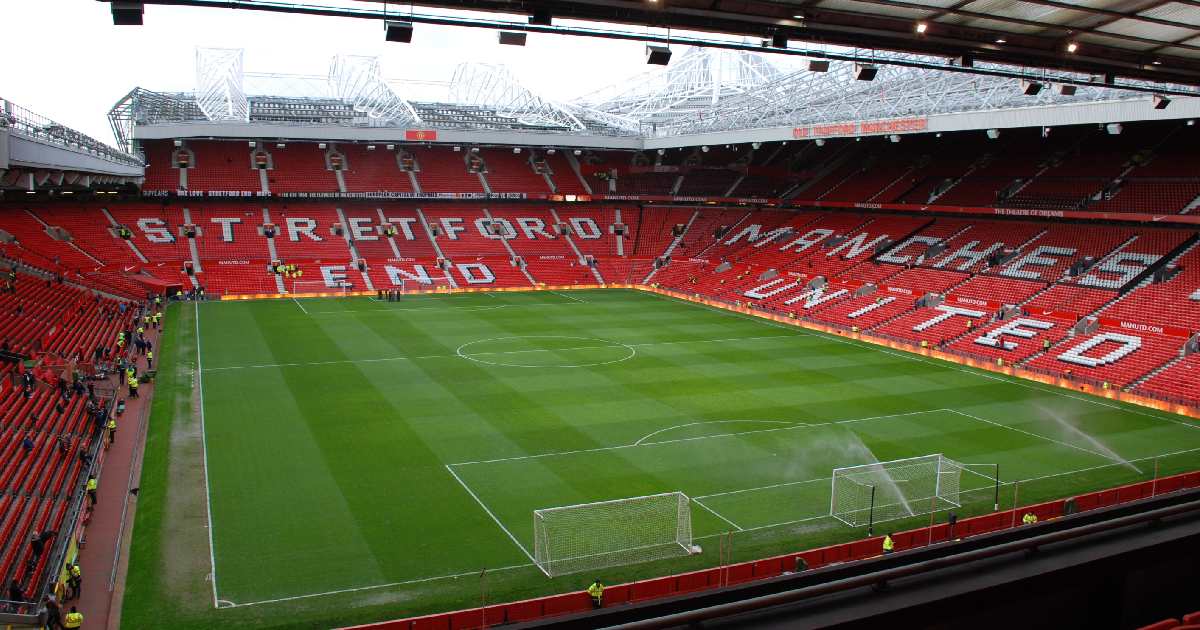
- Location: Manchester, England
- Capacity: 74,140
- Key Features: Home of Manchester United, known as “The Theatre of Dreams,” iconic venue
Old Trafford, termed “The Theatre of Dreams,” is an internationally recognized European football stadium. Manchester United’s primary ground level seats 74,140. The ancient facility holds many unforgettable soccer matches and symbolizes England’s sporting supremacy.
Football fans must go to Old Trafford to explore its extensive past and affiliation with several of the globe’s most prominent sections. On match days, thousands of individuals urge their team. Old Trafford has served up European football, both locally and globally, for over a century
9. Allianz Arena

- Location: Munich, Germany
- Capacity: 75,000
- Key Features: Illuminated façade, home to Bayern Munich, advanced technology
The Munich Allianz Arena is one of Europe’s most stunning football stadiums. Bayern Munich’s contemporaneous 75,000-accommodate complex hosts Premiership and League of Champions competitions. The most striking feature is the stadium’s illuminated exterior, which alters colours with respect to the participating team or tournament.
Technological buildings and fan-friendly infrastructure render the Allianz Arena an exceptional viewing site. The stadium uses sophisticated gather management equipment to handle huge football matches safely. Tourists and football fans admirers can’t miss the stadium in Munich.
8. Ataturk Olimpiyat Stadium
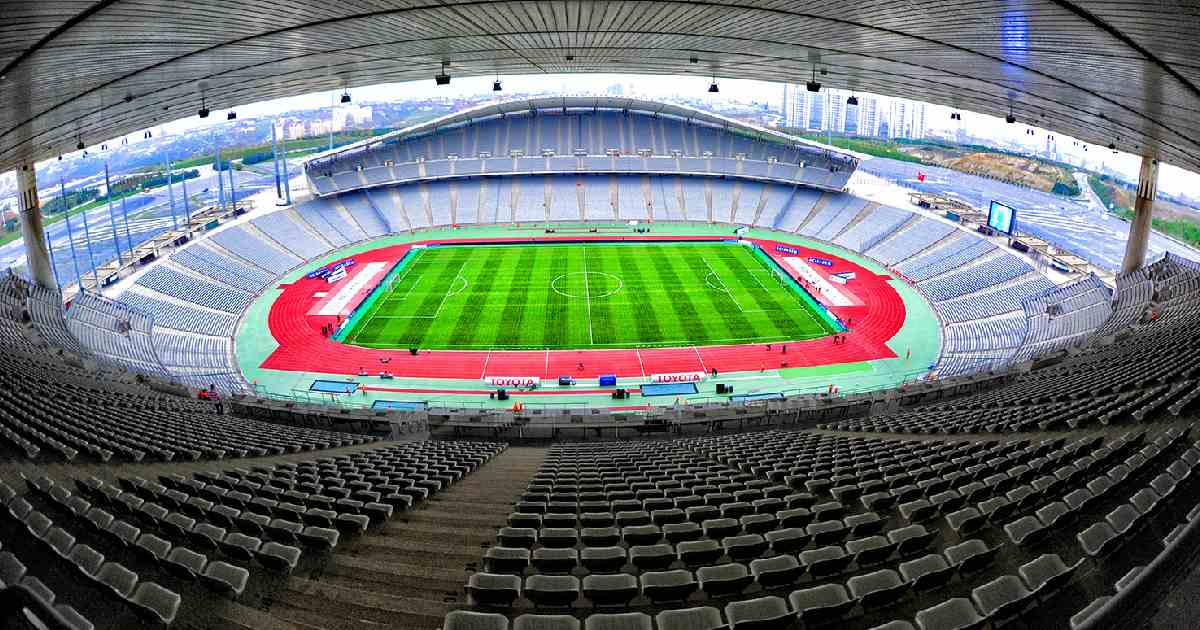
- Location: Istanbul, Turkey
- Capacity: 76,092
- Key Features: Hosts UEFA Champions League Finals, Turkey national football team, Olympic venue
The Ataturk Olimpiyat Stadium, Turkey’s largest football stadium, accommodates 76,092. Turkey’s national football team competes at historic Istanbul stadium, which somewhat organized the inaugural 2005 Champions League soccer final against Liverpool and AC Milan. Originally, the stadium helped Istanbul’s 2008 Olympic campaign.
The stadium’s dimensions and capacity to hold foreign soccer leagues make Ataturk Olimpiyat Stadium an integral European football stadium. The spacious nature and huge dimensions make the venue optimal for the football fans with high stakes matches in football. The stadium’s sleek amenities allow both watching and playing fun.
7. San Siro

- Location: Milan, Italy
- Capacity: 80,018
- Key Features: Shared by AC Milan and Inter Milan, renowned for passionate fans, hosted Champions League finals
The Stadio Giuseppe Meazza, or San Siro, is an interesting football stadium. AC Milan and Inter Milan participate at this 80,018-capacity utilization Milan stadium, one of the rare that supports two major clubs. Renowned for its ardent crowd and stimulating ambiance, San Siro has welcomed plenty UEFA Champions League finals.
Spiraling ramps and distinct construction make San Siro a football icon in Europe. The stadium lures football fans across the world to enjoy Milanese football at one of Europe’s biggest stadiums. Football lovers ought to see the stadium because of its long legacy and passionate vibe.
6. Stade de France
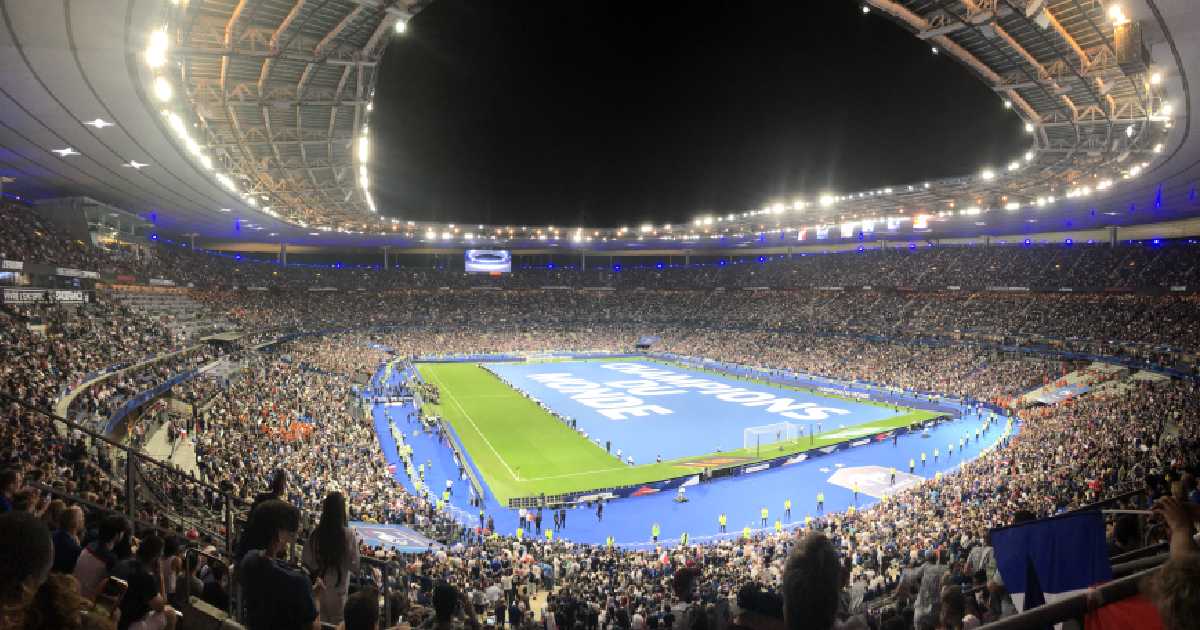
- Location: Paris, France
- Capacity: 80,698
- Key Features: National stadium of France, hosted World Cup and UEFA Champions League finals, multi-purpose venue
Boasting 80,698 seats, Paris’ Stade de France is one of Europe’s greatest and most significant stadiums. The French national stadium played host to the 1998 World Cup by FIFA Final and numerous UEFA Champions League Finals. Other than from football, the playing field holds rugby league, performances, and various other major occurrences.
The Stade de France embodies French football and has held some of the most notable international athletic competitions. The architecture enables extraordinary viewing from all seats, providing every football fan the ultimate match-day experience. The stadium functions as a respected location for football contests, concerts, and other major affairs.
5. Luzhniki Stadium
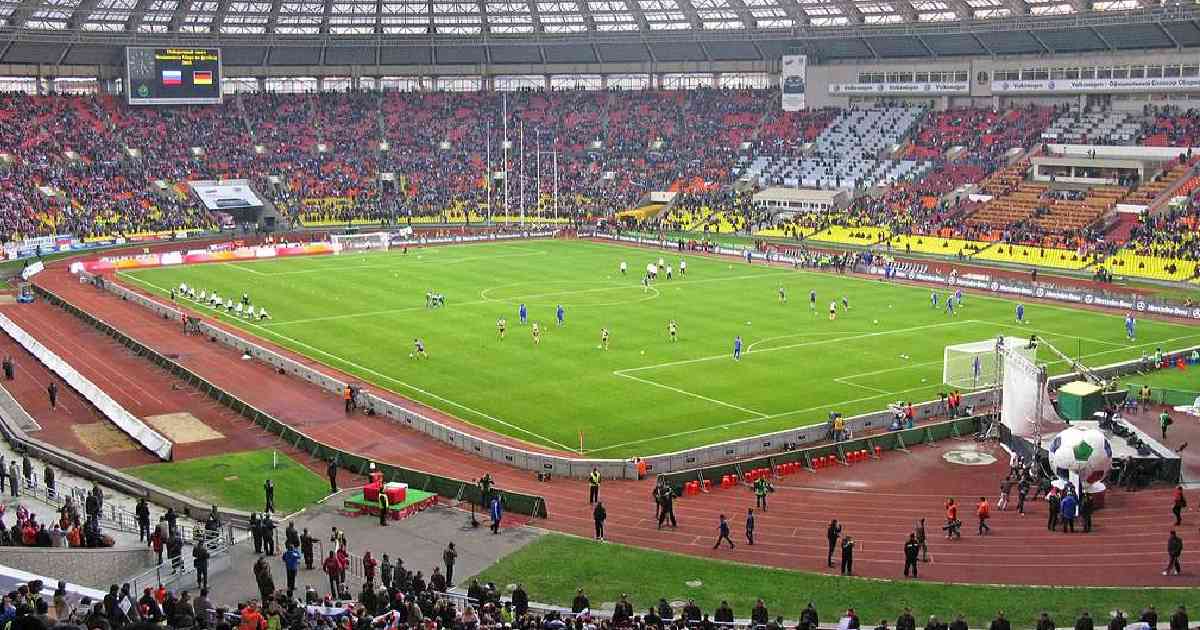
- Location: Moscow, Russia
- Capacity: 81,000
- Key Features: Hosted World Cup final, Russia national football team, multi-purpose stadium
Russia’s largest football stadium, the Luzhniki Stadium in Moscow, is a prominent sports complex. With eighty-one thousand seats, it hosted the 2018 FIFA World Cup final and the 2008 UEFA Champions League final football matches. National football team Russia competes at the arena.
Considering a variety of national and international events, Luzhniki is a significant European sports stadium. It is one of Europe’s largest football stadiums, accommodating a huge number of football fans due to its long existence and recent enhancements. The stadium also features state-of-the-art facilities, ensuring a memorable experience for spectators during major tournaments and matches.
4. Estadio Santiago Bernabeu
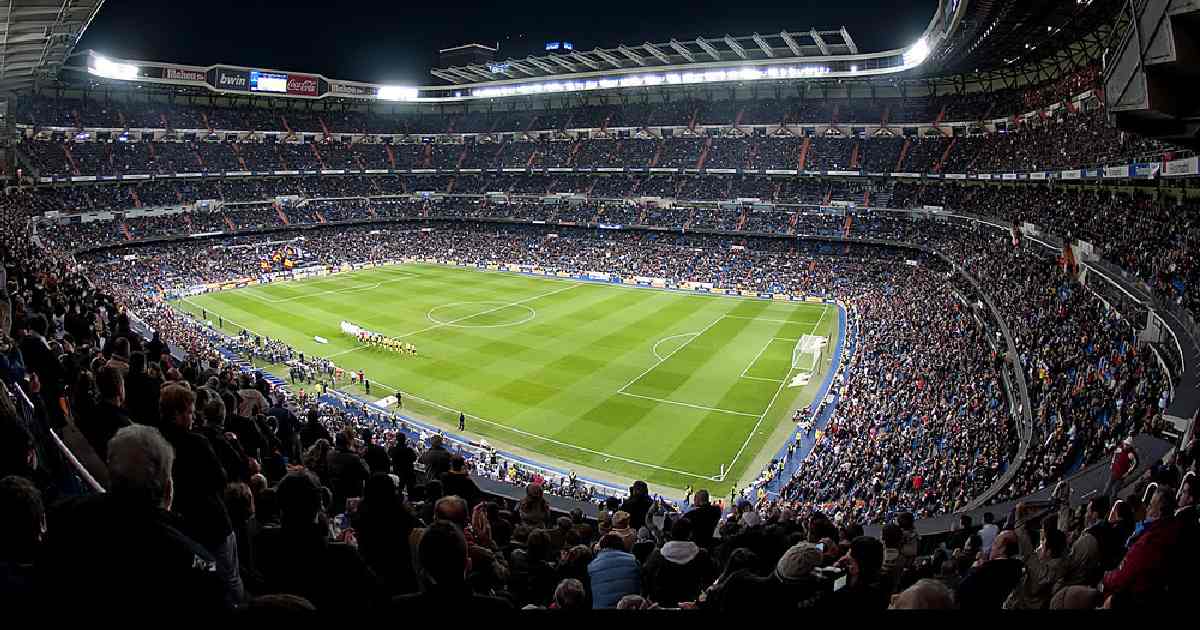
- Location: Madrid, Spain
- Capacity: 81,044
- Key Features: Home of Real Madrid, iconic football stadium, UEFA Champions League venue
Real Madrid, a world-famous football club, plays at Santiago Bernabeu. Arguably of most iconic venues or football stadiums in Europe, this 81,044-seater is in Madrid, Spain. With multiple UEFA Champions League finals, the Bernabeu becomes a famous location for Europe’s premier thrilling football league.
Football fans undertake a pilgrimage to watch arguably of the biggest clubs in history at the Bernabeu. Architecture and attitude make the stadium one of Europe’s top spectacular football venues. Journalists and fans might also savor Real Madrid’s unique tradition and culture all throughout the stadium.
3. Signal Iduna Park

- Location: Dortmund, Germany
- Capacity: 81,365
- Key Features: Home of Borussia Dortmund, largest stadium in Germany, renowned “Yellow Wall”
The nation’s largest football stadium, Signal Iduna Park in Dortmund, Germany, contains 81,365 seats. Borussia Dortmund’s devoted supporters and the “Yellow Wall,” Europe’s greatest continuous terrace, render this arena noteworthy. Visiting clubs perceive Signal Iduna Park challenging because of its immense atmosphere and screaming spectators.
The stadium’s architecture places football fans nearby to the action, ensuring matches memorable for all involved. Bundesliga and international games are played at Signal Iduna Park, one of Europe’s highest-profile football stadiums. Each game feels extraordinary for the reason to the stands’ innovative yellow wall, constructed by passionate fans.
2. Wembley Stadium

- Location: London, England
- Capacity: 90,000
- Key Features: National stadium of England, hosts FA Cup finals and UEFA Champions League finals, iconic arch design
One of the globe’s top football stadiums, Wembley Stadium, accommodates ninety thousand people. The FA Cup Final and UEFA Champions League final football matches will take place in England’s national stadium football team, the national stadium. Wembley’s arch architecture depicts football globally.
Considered one of Europe’s largest football stadiums, Wembley Stadium is recognized for the setting and its capacity for hosting major affairs. Wembley welcomes fans from across worldwide for regional cup tournaments and European championships. The dome and sophisticated amenities boost the arena.
1. Camp Nou

- Location: Barcelona, Spain
- Capacity: 99,354
- Key Features: Largest football stadium in Europe, home of FC Barcelona, rich football history
The 99,354-can accommodate Camp Nou in Barcelona largest football stadium in Europe. FC Barcelona, one of the globe’s finest athletic organizations, competes in Camp Nou, which has hosted some of Europe’s unforgettable football matches. Football fans will cherish the stadium’s dimensions, atmosphere, and fascinating population.
Camp Nou is captivated on play days, particularly at El Clasico, FC Barcelona, and Real Madrid’s fierce rivalry. Football fans worldwide shouldn’t miss this stadium, an ambassador of grandeur. The club’s extensive past and enthusiastic fans make each match even more remarkable.
Conclusion
European football’s largest stadiums are icons that convey football’s dedication, historical events, and heritage. The equivalents of Wembley Stadium and Camp Nou host some of the world’s largest athletic competitions, providing countless football fans. These kinds of Olympic stadium simulate the essence of football, regardless of whether you’re a fan or a tourist.
Frequently Asked Questions (FAQs)
Which football stadium is the biggest in Europe?
Barcelona’s Camp Nou is Europe’s largest football stadium, accommodating 99,354. It is the home of FC Barcelona and hosts some of the most exciting football matches, including the famous El Clasico against Real Madrid. The stadium is known for its rich football history and vibrant match-day atmosphere.
What is the largest stand in Europe?
The largest stand in Europe is the “Yellow Wall” at Signal Iduna Park, home to Borussia Dortmund in Germany. It is the largest standing terrace in European football, holding around 25,000 passionate fans. The “Yellow Wall” is known for its intimidating atmosphere and has become an iconic feature of the stadium during football matches.
Is Camp Nou the biggest stadium in the world?
No, Camp Nou is the largest football stadium in Europe but not the biggest in the world. With a capacity of 99,354, it holds the record in Europe. However, globally, stadiums like the Rungrado 1st of May Stadium in North Korea, which holds over 114,000 people, surpass it in terms of overall seating capacity.
What is the most iconic stadium in Europe?
Wembley Stadium in London is considered the most iconic stadium in Europe. As the national stadium for England, it hosts major football events such as the FA Cup Final and UEFA Champions League Finals. With its iconic arch and rich football history, Wembley is a symbol of football tradition in Europe and around the world.
Which is the most expensive stadium in the world?
The Wembley Stadium in London holds the title of the most expensive stadium in the world, with a construction cost of around $1.5 billion. Known for its iconic arch and being the home of the England national football team, Wembley regularly hosts prestigious football matches, including the FA Cup Final and international events like the UEFA Champions League Final.

